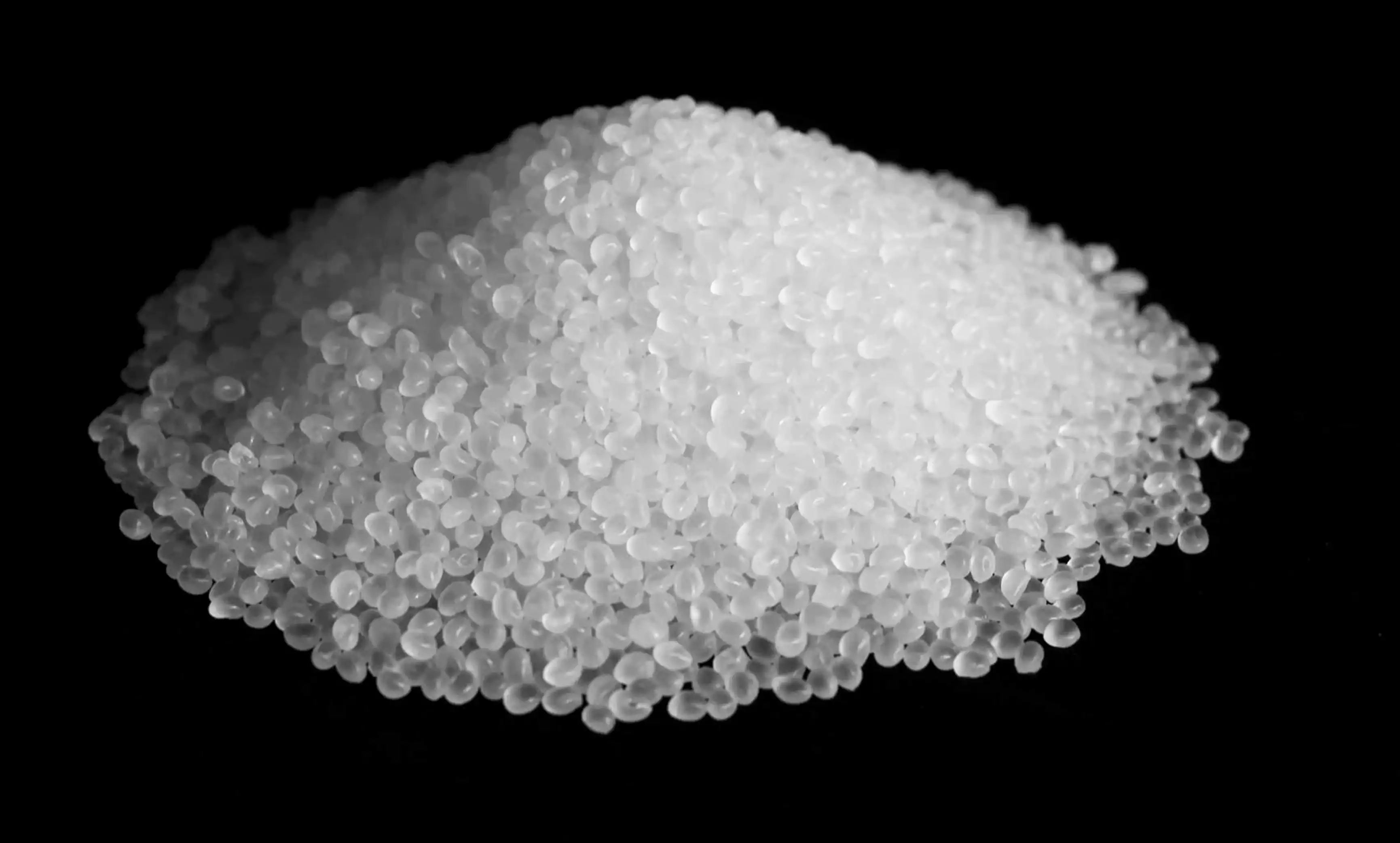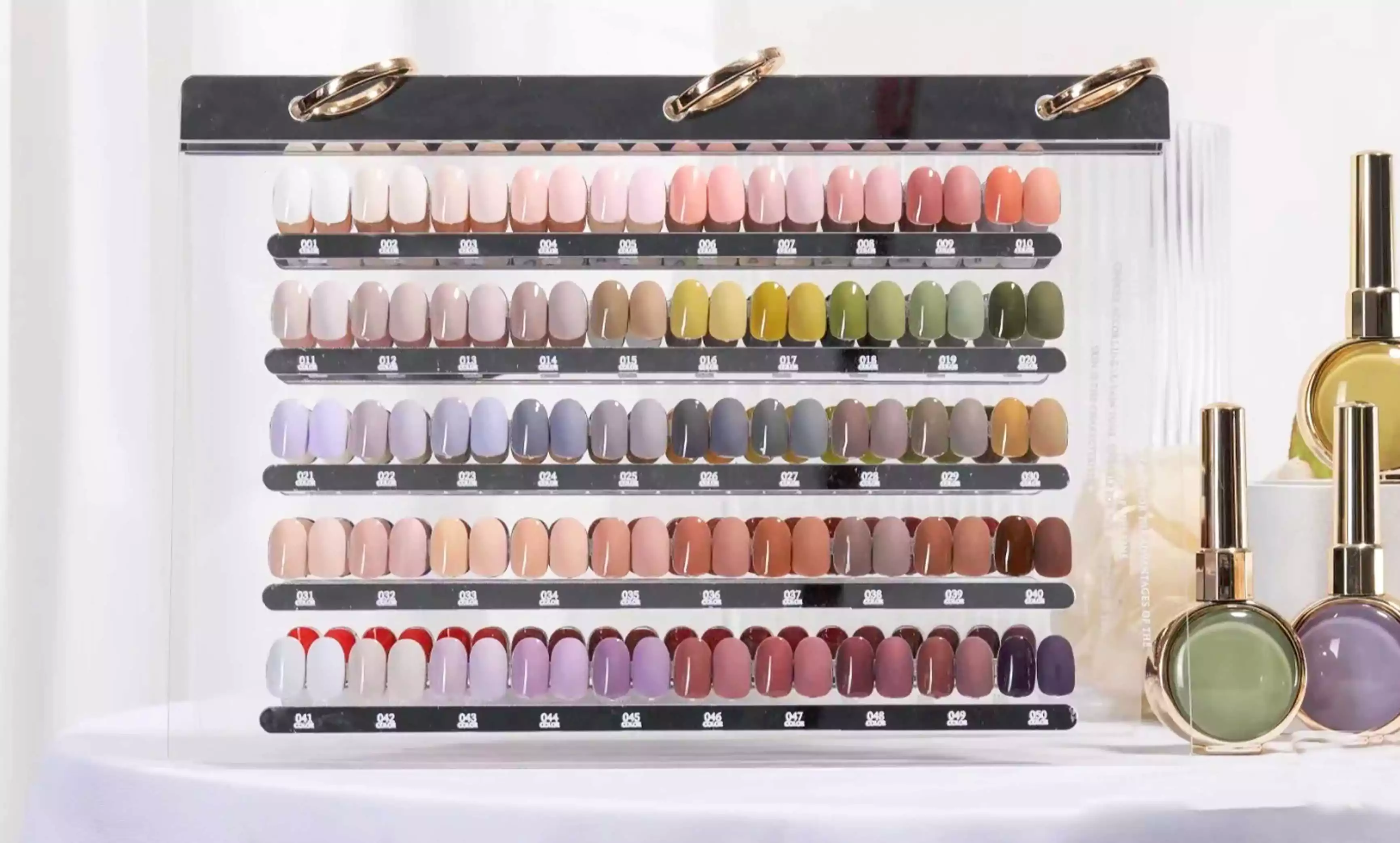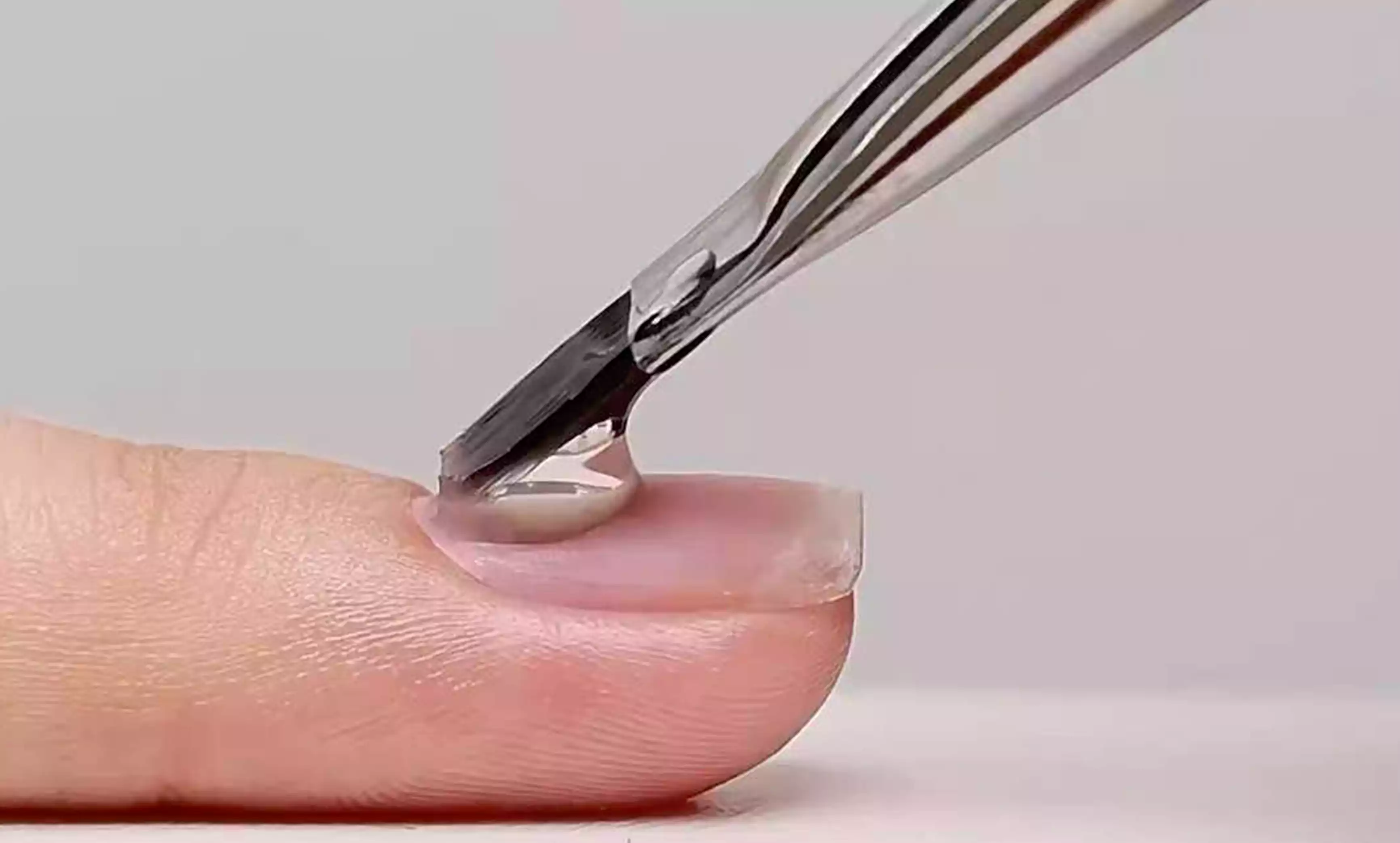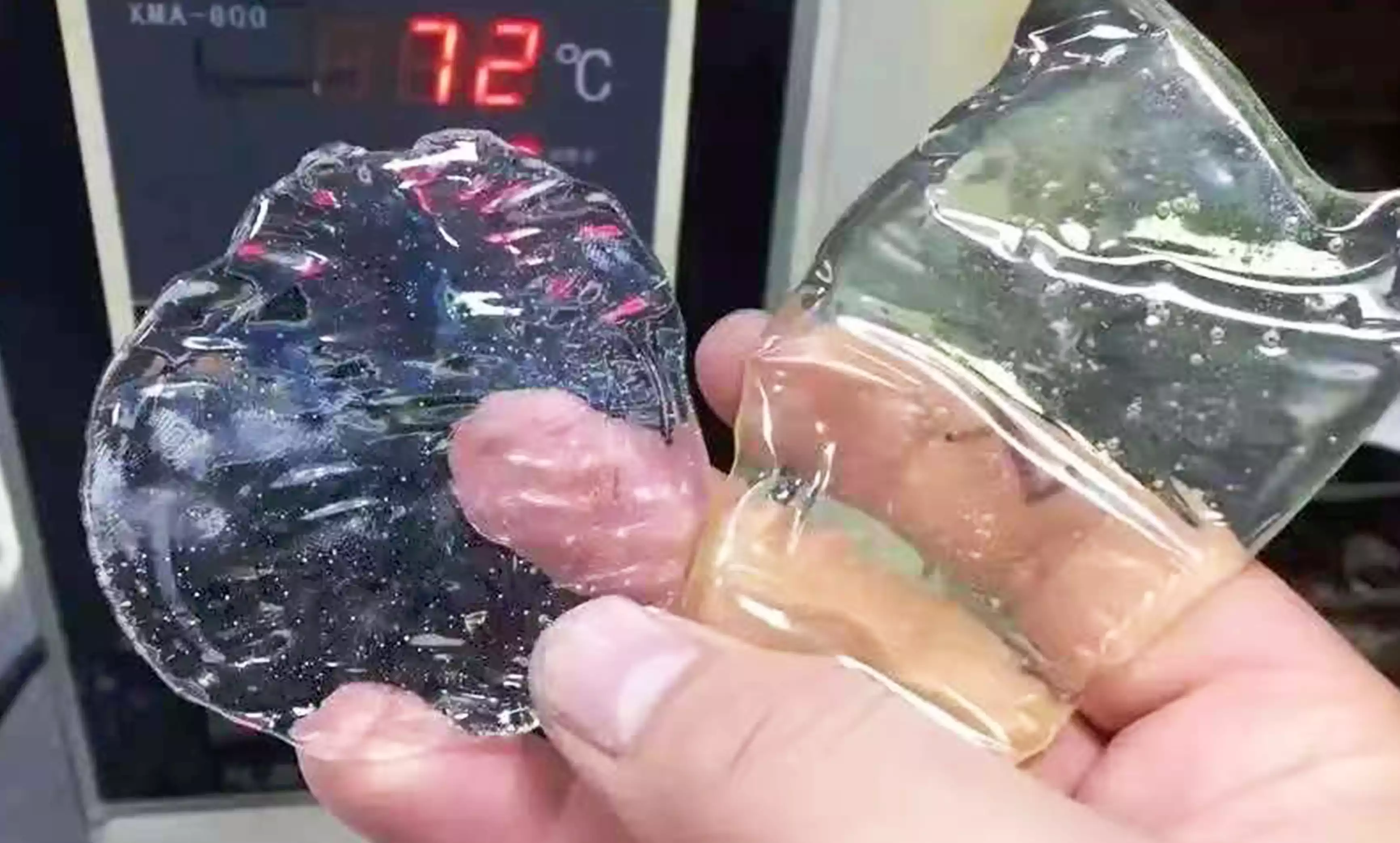What is used to make UV gels?
UV gel polish has become the preferred choice for modern nail technicians due to its exceptional gloss, durability, and ease of application. However, to fully leverage its performance advantages, it relies on precise material ratios and scientifically formulated ingredients. A true understanding of the five core components—oligomers, monomers, photoinitiators, pigments, and additives—and how they synergistically interact is key for nail technicians to elevate nail art quality, optimize application feel, and ensure the health of their clients’ nails.
01 Resin Selection Guide
Resin serves as the “backbone” of gel polish, determining its fundamental properties such as curing speed, hardness, flexibility, and adhesion. Different functionalities of gel polish require resins with distinct characteristics.
 1.1 Sealing Resin
1.1 Sealing Resin
The sealing resin forms the outermost layer and requires high gloss, high hardness, abrasion resistance, and chemical resistance (e.g., alcohol).
- Trust-7136B: This is a trifunctional polyurethane acrylate with extremely fast curing speed, high hardness, and excellent alcohol resistance. Particularly suitable for low-energy curing under UV light at 405nm or 395nm wavelengths. When paired with thiol curing agents or methoxy monomers, it forms an odorless sealer capable of 60-second rapid curing. The cured film delivers a dry, resilient surface with rich gloss and excellent storage stability.
- Trust-7135: As a two-functional polyurethane acrylate, it not only cures rapidly but also exhibits excellent toughness. It remains non-yellowing and maintains clear transparency after curing. It can also be combined with thiol curing agents or methoxy monomers to achieve 60-second curing. Its advantages include low exothermic reaction during application, minimal shrinkage, mild odor, and a robust, non-brittle coating, making it an ideal choice for sealing resins.
1.2 Color Resin
The color resin is located in the intermediate layer and must possess excellent pigment dispersion and interlayer adhesion to prevent peeling or shrinkage.
- Trust-7081:This resin offers moderate curing speed, effectively wets pigments to prevent settling, and provides outstanding adhesion, making it highly suitable for color intermediate layers.
 1.3 Base Coat Resin
1.3 Base Coat Resin
The base coat directly contacts the nail, requiring strong adhesion while remaining flexible with minimal shrinkage to avoid burdening the nail.
- Trust-7005: This resin offers exceptional flexibility with low curing shrinkage, ensuring secure adhesion to the nail surface. Its pure color and low odor make it gentler on nails.
1.4 One-Step Resin
One-step resin refers to products that combine coloring and sealing functions, requiring rapid curing alongside excellent color development and adhesion.
- Trust-7089:It features fast curing and superior adhesion with excellent color performance. Whether used for sealing or as a colored one-step resin, it is compatible with long-wave UV low-energy light sources.
02 Selection and Combination of Monomers
Monomers primarily regulate the viscosity of the polymerization mixture, participate in the curing reaction, and influence curing speed, hardness, and adhesion.
2.1 Suitable Monomers for Sealing Coats
- AM-318 (Morpholine Acrylate): Fast curing, high hardness, but exhibits slight yellowing, particularly noticeable in white adhesives. It is water-soluble, requiring attention to ambient humidity during use.
- FM-362 (methoxyacrylate):Excellent antioxidant and anti-polymerization properties, fast surface drying, low viscosity, and strong dilution capability. Its drawback is a relatively high price.
2.2 Monomers Suitable for Intermediate Coat Colorants
- AM-313: This monomer cures rapidly, offers excellent toughness and adhesion, resists water, and provides high cost-effectiveness, making it ideal for intermediate color layers.
2.3 Monomers Suitable for Base Coat
- AM-319: Exhibits exceptional adhesion and flexibility. The cured film is glossy with outstanding water resistance, making it particularly suitable for base coats to enhance durability.
 03 Scientific Application of Additives
03 Scientific Application of Additives
Although additives are used in small quantities, they play a crucial role in the storage stability, workability, and final appearance of gel polish.
3.1 Mercaptan Curing Agent

- Thiol-45L: High purity, low odor, and stable storage;
- Thiol-30L:In addition to high purity, it offers significant antioxidant and anti-polymerization effects with excellent cost-effectiveness. Both significantly enhance curing efficiency.
3.2 Heat Stabilizers
- AD-2001: Effectively prevents yellowing of gel polish during storage due to heat, enhances product stability, and does not affect light-curing speed.
3.3 Polymerization Inhibitors
- AD-2003: Primarily used in color paste systems to enhance light storage stability and prevent premature reactions in formulations containing high levels of photoinitiators. Note that slight yellowing may occur at elevated temperatures; therefore, it is not recommended for use in the outermost layer.
 Summary:
Summary:
The performance of UV gel polish hinges on scientifically balanced material ratios. While nail technicians needn’t become chemistry experts, understanding key ingredient functions—such as how resins affect durability, monomers adjust application feel, and additives enhance stability—empowers you to make smarter product choices. This leads to longer-lasting, more aesthetically pleasing, and healthier nail art (CHROMÉCLAIR’s HEMA-free Gel Polish prioritizes safety, low irritation, and eco-friendliness, with ingredients compliant with EU standards).
Selecting photoinitiators that match your UV lamp wavelength, focusing on the optimal combination of resins and monomers, and rigorously conducting compatibility testing—these are essential steps in creating high-quality, safe, and reliable nail products.
